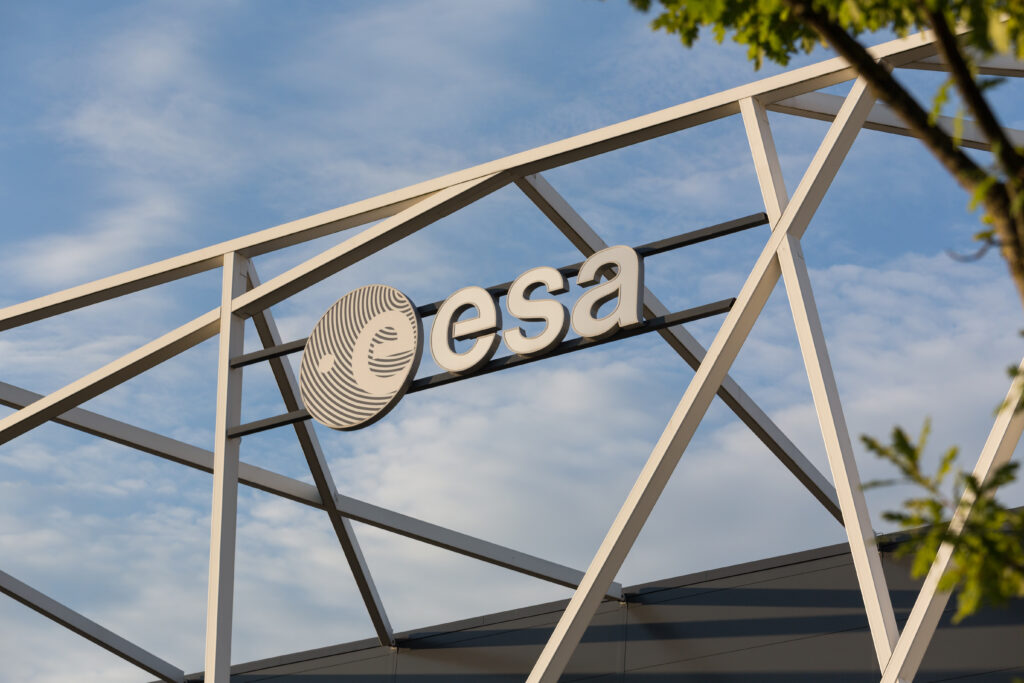The European Space Agency’s (ESA) Hera space probe made a fascinating detour past Mars on Wednesday, capturing incredible images of the Red Planet and its lesser-known moon, Deimos. This unexpected encounter happened during Hera’s journey to the asteroid Dimorphos as part of ESA’s groundbreaking planetary defense mission.
Unprecedented Images of Mars and Deimos
On Thursday, the German Aerospace Center (DLR) in Cologne confirmed that the maneuver was successful. ESA released the breathtaking images during a live-streamed webcast, showcasing new details of Mars and rare high-resolution views of Deimos from a never-before-seen angle.
“We have some incredible images from the Mars-facing side,” said Austrian geophysicist Stefan Ulamec. “But this is one of the rarest and perhaps the highest-resolution images we’ve obtained of Deimos’ far side.” Compared to its larger counterpart, Phobos, Deimos remains relatively unexplored. “Any chance to observe Deimos is of great value,” added Patrick Michel, Hera’s principal investigator.
Hera’s Planetary Defense Mission
Hera, ESA’s first planetary defense mission, was launched in October last year. Its primary goal is to study the effects of NASA’s 2022 Double Asteroid Redirection Test (DART), which purposely collided with Dimorphos, a small moon orbiting the asteroid Didymos. The goal of DART was to change Dimorphos’ orbit as a demonstration of asteroid deflection technology.
“Two years ago, we tested asteroid deflection by changing Dimorphos’ orbit,” said Ian Carnelli, Hera’s mission manager. “Now, we’re returning to analyze the impact in detail and turn this experiment into a viable technique for planetary defense.” Carnelli emphasized the importance of the mission as an “essential insurance policy for Earth,” highlighting the need for effective asteroid monitoring and deflection techniques.
The Purpose of the Mars Flyby
Hera’s flyby of Mars was strategically planned to adjust its trajectory for a precise approach to the Didymos system. Although observing Mars’ moons was not part of the original plan, the team took advantage of the opportunity to gather valuable data.
By using Mars’ gravity to boost its speed, Hera saved both time and energy on its journey. “This maneuver significantly shortened Hera’s journey and conserved a considerable amount of fuel,” the ESA reported. Carnelli described the process of “harvesting planetary energy” as an efficient way to reach deep-space targets with minimal energy consumption.
Asteroid Defense: A Global Priority
The significance of the mission was highlighted by astrophysicist and Queen guitarist Brian May, who attended the image unveiling. “This concerns all of us because an asteroid impact could be catastrophic, just like what happened to the dinosaurs,” he said. “If we fail to detect a potentially dangerous asteroid in time, humanity could be at risk.”
Hera’s successful Mars flyby marks an important milestone in humanity’s quest to protect Earth from potential asteroid threats. As the spacecraft continues its journey toward Dimorphos, scientists around the world eagerly await more groundbreaking discoveries.
